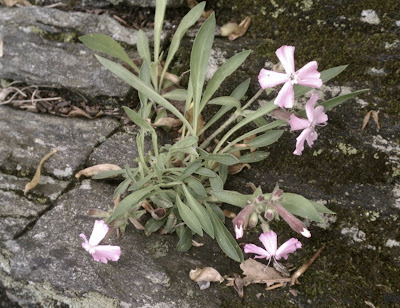 |
| Wild Blue Lupine |
Picked up replacement Wild Blue Lupine from Twombly Nursery in Monroe today. The previous lupine succumbed to the voles last year. Twombly does have a good selection of native plants IF you know exactly what you are looking for and are familiar with which plants are native and which just look like they should be native. Twombly does have a habit of mixing them up. Earth Tones is normally my choice for natives because when you absolutely want a native plant, you can't screw up and grab something non-native.
 |
| Small Yellow Ladyslipper |
Today they had some beautiful Small Yellow Ladyslippers available, so I purchased one for Eklund. These are not your normal Pink Lady Slippers, which we already have up on top of the hill under the pines where the soil is very acidic. The Pink Lady Slippers cannot be transplanted and we were just lucky they happened to be growing there. Yellow Ladyslippers are native to the northeast, but you probably would not find them in Shelton because they prefer neutral, damp soil. There is one section of the back beds that I have been adding dolomite to for those types of natives, so that's where I put it. It is a shady spot but right on the edge, so it might get an hour or two of sun. Hopefully it will be moist enough. Water does seep out of the hill for much of the year.




























